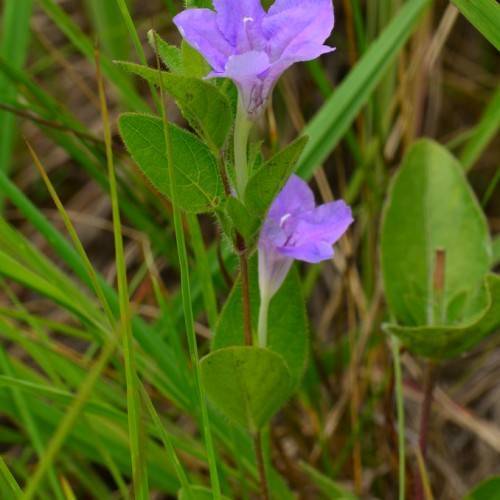
wild petunia
Ruellia humilis
Cycle:
Herbaceous Perennial
Watering:
Average
Hardiness Zone:
4 - 8
Flowers:
Flowers
Sun:
full sun
Leaf:
Yes
Growth Rate:
Low
Maintenance:
Moderate
Drought Tolerant:
Yes
Salt Tolerant:
Yes
Invasive:
Yes
Tropical:
Yes
Care Level:
Low
watering
Wild petunia, also known as Ruellia humilis, is a drought resistant plant species that prefers light but consistent watering. It should be watered about once or twice a week, but frequency of watering should be adjusted according to the weather conditions in your area. If conditions are hot and dry, the petunia should be watered more often. Otherwise, if conditions are cool and wet, it may not need to be watered as frequently. When watering, it is important to apply enough water to moisten the soil thoroughly and to prevent the roots from drying out. Additionally, it is important to make sure the soil drains well, and to avoid overwatering, as this can lead to issues such as root rot.
sunlight
The wild petunia or Ruellia humilis needs plenty of sunlight in order to thrive. Experts recommend 6 to 8 hours of direct sunlight each day, and, if possible, exposure to the light for almost a full 12-hour period. With an adequate amount of sunlight, this plant species will display vibrant blue-violet flowers and lush foliage throughout the growing season.
pruning
Wild petunia (Ruellia humilis) should be pruned twice a year, once in early spring and again in mid-summer. In spring, prune up to half the stems and any wilted or dead leaves to encourage new growth. In summer, prune off spent flowers and trim back the plant by up to 1-third for a fuller, healthier plant. Be sure to wear gloves and prune with clean, sharp shears.
